36 F. low temperatures at MSP
International Airport Sunday morning.
61 F. high yesterday in the Twin Cities.
69 F. average high for September 23.
60 F. high on September 23, 2011.
0" predicted rainfall thru Sunday morning in the Twin Cities.
First Freeze. Andrew Jopp snapped this photo up in
Fergus Falls, where Sunday morning temperatures dipped into the low and
mid 20s for a couple of hours. So long ragweed....
Sunday Morning: Mostly Frost-Free MSP Metro. As
expected, temperatures stayed above freezing within the 494/694 Loop;
Lake Elmo residents woke up to 27, 28 at Lakeville and Cambridge and 29
Northfield. A frost/freeze over most of greater Minnesota probably
killed off a fair amount of ragweed (among other plants) overnight -
maybe allergy sufferers will notice some improvement in the coming days.
+2.9 F. The first 21 days of September are running nearly 3 F. warmer than average.
"...According
to a poll conducted by researchers at Yale University’s Project on
Climate Change Communication, four out of five Americans reported
personally experiencing one or more types of extreme weather or a
natural disaster in 2011, while more than a third were personally
harmed either a great deal or a moderate amount by one or more of these
events." - from an article at Health News Digest; story and links below.
"...
While there is virtually no mention of climate change in the
local news, reporters have turned the weather into a national pastime.
Perhaps this is because storms, hurricanes and tornadoes ignite a
primal reaction, whereas climate change requires an intellectual one....
....
sharks claim about 12 lives per year, while car crash fatalities average around 93 per day.
In the case of climate change, fear over problems that will affect us
50 years from now cannot compare with fear of challenges we face today.
What people don't understand is that climate change is, in fact,
already affecting our economy."
- excerpts from a
Guardian story on U.S. media misinformation on climate change; details below.
"
Medical mistakes kill enough people each week to fill four jumbo jets." - from a jaw-dropping story at the Wall Street Journal; links below.
 "Serial Mastery".
"Serial Mastery". A life of continuing education,
new skills, perpetual training and reinvention? Sounds like the 21st
century to me. The New York Times captures the challenge (for all of us)
to stay current and employable in an article below. Photo credit
here.
Arctic Melt-Down.
This animation,
from NOAA's Environmental Visualization Laboratory, shows the historic
melting at the top of the world; ice volume and aerial extent roughly
18% lower than the previous record low, set in 2007.
Spectacular Aurora. Check out this
YouTube clip of a stunning display of the Northern Lights over Wick, Scotland, courtesy of "spider72wtf".
Indian Summer. It's generally accepted that "Indian
Summer" is a period of unusual warmth coming after the first frost of
the season. So residents of greater Minnesota can rightfully refer to
this as Indian Summer, residents of the metro can accurately call
today's mid-70s a warm front. Semantics. Graph: Iowa State.
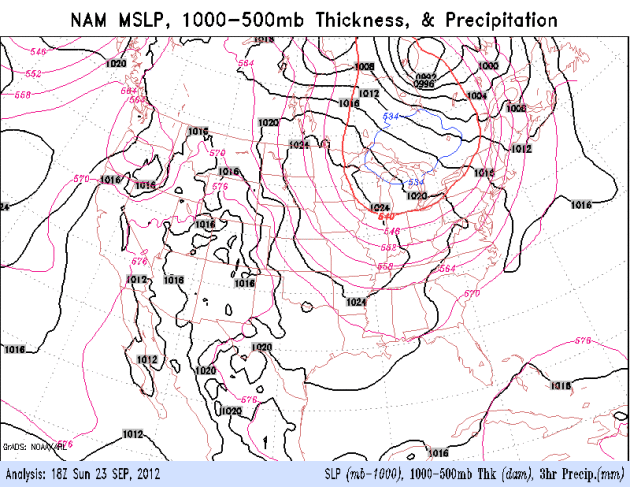 Textbook September
Textbook September.
This week sums up how spectacular (and dry) September can be. A series
of clippers keep the Great Lakes and New England air conditioned, a few
showers and T-storms over the Ohio Valley and South Florida, otherwise
it's a dry, quiet weather map for much of the USA. 84-hour NAM model
animation: NOAA.
Not A Drop. Every single model keeps us dry into at
least Saturday; a couple of (light) showers may push across northern
Minnesota by Sunday - but the pattern won't favor significant rain
anytime soon. Highs range from the low 60s to the low 70s, arguably one
of the best weeks of 2012...?
Down To A Trickle. This is, or was, the Raccoon
River at Booneville, Iowa - just southwest of Des Moines. There used to
be a river there. Thanks to Sandi Smith for sending this to
WeatherNation TV meteorologist Bryan Karrick.
Drought Timeline. NOAA's
U.S. Drought Monitor shows the gradual progression and intensification of the drought covering much of the USA in this
animation.
The statistics are interesting: 70% of the lower 48 states are now
described as "abnormall dry", moderate drought impacting 54% of the
USA (up from 24% at the start of the water year). Severe drought is
impacting over a third of America, up from 15.8% at the start of 2012.
Fire Danger. According to the
Minnesota DNR
the fire risk has been upgraded to "very high" over the Red River
Valley. A high risk exists for most of central and southern Minnesota.
3 Month Guess (Outlook). CPC, NOAA's
Climate Prediction Center,
is forecasting a milder-than-average October thru December for a huge
chunk of the USA, drier than average for the Pacific Northwest, wetter
across the Gulf coast and southeastern USA (which correlates with an El
Nino warming over the central Pacific). Again, buyer beware. Odds favor a
mild bias into at least the first half of winter, based on the trends
of recent winters, but I sure wouldn't bet the farm on this. Call me
perpetually paranoid, but what's happening in the Arctic (record
melting) may have some blow-back across the lower 48. Hope I'm wrong.
Looking Ahead. Everyone wants to know what the
winter will be like. Me too. Can you tell me where the NASDAQ will be in
mid-February? Interest rates in early March? Looking at recent trends
this winter should be milder than average, especially factoring in a
mild to moderate El Nino warming, but that warming is taking place in
the central Pacific, and in previous El Nino's like this the biggest
impacts were over the Pacific Northwest and the southeastern USA, with
little impact (cold or warm) on Minnesota and the Midwest. As I've been
mentioning ad nauseum for days now, the Arctic is a huge wildcard.
Record warming has created a semi-permanent bubble of warm high pressure
at the top of the world, which may displace the cold "polar vortex"
farther south, meaning more bitter swipes extending southward into the
USA. The truth: models have some skill out to 15-20 days. Beyond that,
forget about it. We can use ocean temperatures as cues, but there is
still no reliable way to connect the dots and make a winter prediction
with high confidence. Here is Mark Seeley's take in the latest
installment of
WeatherTalk: "
On
Thursday of this week the NOAA Climate Prediction Center issued new
seasonal climate outlooks. The temperature outlook for Minnesota favors
above normal values over the October-December period. Actually this
trend is seen for about 75 percent of the USA based on dynamical models
and past trends. Little emphasis is placed on El Nino at the moment
because it remains in a neutral state. The precipitation outlooks shows
equal chances for above or below normal values over the
October-December period across most of the USA except the southeastern
and mid-Atlantic states which are expected to see above normal values."
Floods Bring Evacuations In Alaska Town.
The New York Times has the story; here's an excerpt: "
ANCHORAGE (AP) — Residents of the Alaska tourist town of Talkeetna have been asked to leave because of the threat of flooding from the rain-swollen Talkeetna River....Gov.
Sean Parnell toured the area around Talkeetna by helicopter on Friday
and landed to talk to some of the residents who fled their homes. The
governor declared a state disaster for the areas hit by the flooding.
Talkeetna, about 75 miles north of Anchorage, is the last stop for
climbers heading to Mount McKinley. It also has an eclectic population
and has long been purported to be the inspiration for the Alaska town in
the 1990s television series “Northern Exposure.”
Video credit above: Here's an excerpt from a
YouTube clip of significant flooding in Alaska: "
View
Aerials of a few flood damaged areas as the Assistant Borough Manager
talks about what he saw while surveying the flood damaged areas from
helicopter."
With Extreme Weather Will Insurers Come To The Rescue? Here's an excerpt of a timely story from meteorologist Andrew Freedman at
Climate Central: "
Following
a damaging episode of extreme weather, communities turn to insurance
companies to help them rebuild, but with costly extreme weather and
climate events on the rise as the climate continues to warm, insurers
may stop coming to the rescue, a new report warns. The report from Ceres,
a nonprofit group that advocates for sustainable business practices,
calls attention to the threat that extreme weather events pose to the
sustainability of the insurance industry, which has been hit hard by
record-breaking extreme weather in recent years, on top of lower profits
due to other reasons."
"Ask Paul". Weather-related questions and comments:
Hi-
"When the highs/lows are listed for a certain day of the week - what
hours does that include? I always thought it was the 24-hour period from
midnight to midnight, so when you wake up, say, on Sunday and read the
paper, the low from Sunday could have already been reached during the
midnight to 7 am time of the 24 hour clock of Sunday. Is that correct?
Thanks!
Debby Swinney
Debby - appreciate the question. It's always challenging trying to
come up with the best way to display expected high/low temperatures for a
given day. The paper is printed between midnight and 3 am, in plenty of
time for it to show up on your doorstep or in your mailbox by 6 or 7
am. So we don't have an "actual" low temperature; it's still a predicted
low. Realizing there is no "perfect" way to display these predictions
that everyone will like, we agreed that the high/low in the 7-Day is for
that specific day, not a midnight to midnight prediction. In other
words: the 38 F. low for Monday morning was the predicted wake-up low
temperature for this morning, followed by a predicted high of 75 this
afternoon. Wednesday morning's low of 43 gives way to a predicted high
of 63. I hope this helps.
Like An Explosion At A Crayola Crayon Factory. Check out the scenery up at Lutsen: "The view from Moose Mountain. It's a great time to ride the Mountain Tram and enjoy the spectacular foliage!"
 "Inliers": Why Non-Experts Are Better At Disruptive Innovation
"Inliers": Why Non-Experts Are Better At Disruptive Innovation.
Is it possible to be "too close" to your subject matter, too engrossed
in your area of expertise, to see (disruptive/revolutionary) solutions?
Here's an excerpt of an interesting article at
Huffington Post: "
I
believe that people who will come up with creative solutions to solve
the world's biggest problems -- ecological devastation, global warming,
the global debt crisis and distribution of dwindling natural
resources, to name a few -- will not be experts in their fields. The
real disruptors will be those individuals who are not steeped in one
industry of choice with those coveted 10,000 hours of experience, but
instead, individuals who approach challenges with a clean lens, bringing
together diverse experiences, knowledge and opportunities. And while
experts will have a part to play in solving today's looming crises
where incremental evolution is needed, I believe that non-expert
individuals will drive disruptive innovation. Here's why."
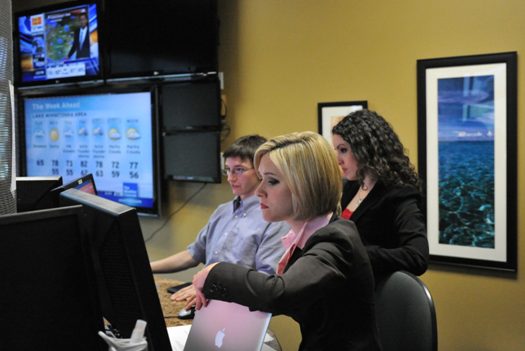 To Stay Relevant In A Career, Workers Train Non-Stop
To Stay Relevant In A Career, Workers Train Non-Stop.
I keep telling my boys that things have changed. When I graduated from
college in 1980 a degree was a passport for a better life. It still is,
but the rate of technological innovation has increased dramatically with
smaller business cycles. The only predictable thing: change. That means
life-long learning, continuing education and reinvention is critical to
stay current and employable. I thought The New York Times did a good
job capturing this technological treadmill in
this article; here's an excerpt: "
...But
exhaustion may be a luxury that Mr. Hallock can never afford. The need
to constantly adapt is the new reality for many workers, well beyond
the information technology business. Car mechanics, librarians,
doctors, Hollywood special effects designers — virtually everyone whose
job is touched by computing — are being forced to find new, more
efficient ways to learn as retooling becomes increasingly important not
just to change careers, but simply to stay competitive on their chosen
path.....Lynda Gratton, a professor of management practice at the
London Business School, has coined a term for this necessity: “serial
mastery.”
$20,000 Give To Girl For By AT&T For Creating Anti-Texting While Driving App. Coming to an smartphone near you soon;
iPhone Informer has more details: "
$20,000
has been given to a young girl by AT&T for creating an anti-texting
while driving app. An 11-year old was awarded the prize money as part
of a hackathon last month. She created a concept mobile app that aims
to raise awareness for the “It Can Wait” campaign (via iDB) The app is
entitled Rode Dog and allows users to be placed into “packs,” “with
members of the pack able to check whether others are texting whilst
driving. If they are, remote users can set off an alarm – a dog
barking, oddly enough – in order to tell the offending texter to stop.”
How To Stop Hospitals From Killing Us. If you read
one article today make it this one. I know I'll be asking tougher
questions the next time I check into a hospital for a procedure. The
statistics are harrowing. Here's an excerpt from a
Wall Street Journal story (subscription may be required for online access): "
When
there is a plane crash in the U.S., even a minor one, it makes
headlines. There is a thorough federal investigation, and the tragedy
often yields important lessons for the aviation industry. Pilots and
airlines thus learn how to do their jobs more safely. The world of
American medicine is far deadlier: Medical mistakes kill enough people
each week to fill four jumbo jets. But these mistakes go largely
unnoticed by the world at large, and the medical community rarely
learns from them. The same preventable mistakes are made over and over
again, and patients are left in the dark about which hospitals have
significantly better (or worse) safety records than their peers."
Flat Earth Society. Hey, I'm keeping an open mind.
All those (millions) of images from satellites could have been faked,
along with the moon landings, for that matter. Here's an excerpt of an
FAQ from
theflatearthsociety.org: "
"Q: "
Why do you believe the earth is flat?"
A: It looks that way up close. In our local reference frame, it
appears to take a flat shape, ignoring obvious hills and valleys. In
addition, Samuel Rowbotham et al. performed a variety of experiments
over a period of several years that show it must be flat. They are all
explained in his book, which is linked at the top of this article."
Art In The Era Of The Internet. I found this clip at
Brain Pickings interesting: "
Over the past few months, the fine folks at PBS Arts have been exploring various facets of creative culture — including typography, product design, generative art, papercraft, and more — and their evolution in the digital age as part of the ongoing Off Book series. The latest installment explores art in the era of the Internet, and features Kickstarter founder Yancey Strickler, Creative Commons mastermind Lawrence Lessig, and my dear friend Julia Kaganskiy, editor of Creators Project, along with her colleague and creative director Ciel Hunter."
Dog Given Up During Hurricane Katrina Turns Up In North Carolina. Here's an excerpt of a fascinating story of survival and true (animal) grit, courtesy of The Today Show's
Animal Tracks: "
A
dog given up in the aftermath of Hurricane Katrina seven years ago has
been found wandering along a road in North Carolina, and its original
owners in Louisiana say they want him back. The 15-year-old white poodle
named Shorty has a microchip and staff at the Cabarrus Animal Hospital in Kannapolis, N.C., were able to trace it to its family in New Orleans."
Good Enough For Me. Maybe if you're watching TV you won't notice the price of gas. I snapped this photo in St. Cloud yesterday. Nice pumps.
On This Date In Weather History (for September 23). Information courtesy of the local Twin Cities
NWS:
1985: 0.4 inches of snow fell in the Minneapolis area.
1982: Tropical air over the state. The Twin Cities has a low of 71.
1869: Heavy rain dumps nearly 10 inches on the White Earth Reservation.
Brisk, But Better. At least the wild winds died down a bit, a frosty start across much of Minnesota giving way to blue sky and highs near 60.
Paul's Conservation Minnesota Outlook for the Twin Cities and all of Minnesota:
TODAY: Warm sun, breezy. Winds: SW 10-20+ High: 75
MONDAY NIGHT: Clear skies. Low: 49
TUESDAY: Blue sky, cooling down to "average". High: 66
WEDNESDAY: Sunny, light winds as high pressure drifts overhead. Low: 44. High: 64
THURSDAY: Dry and dusty. Lukewarm sun. Low: 47. High: 68
FRIDAY: Still quiet. Sunny and mild. Low: 50. High: near 70
SATURDAY: Fading sun, probably dry. Low: 52. High: 71
SUNDAY: Partly sunny, isolated shower north? Low: 50. High: 69
* photo above courtesy of Migizi Gichigumi, who snapped this sunset photo in Bayfield, Wisconsin.
Brown and Beautiful
Looking for a nice, stable 8 to 5 gig? If so,
step away from the Doppler. 8 hours of uninterrupted sleep? Weekend
plans? A vacation coming up? If there's a big storm brewing you'll be
stuck on a (bad) date with Mother Nature.
Why bring this up? Because September and early October brings the lowest odds of life-threatening weather in Minnesota.
The facts: blizzards and wind chill strike from
November into March. A week later it's tornado season. Summers bring
flash floods, lightning and extreme heat.
No kidding.
I'd feel better about this amazing, blue-sky
weather-vacation if we could negotiate 2 days, back-to-back, of soaking,
4-inch-plus rain.
Returning from our cabin Sunday I noticed
knee-deep water in the Mississippi River at St. Cloud; new islands
popping up that weren't there a month ago.
NOAA is leaning toward a worsening drought over
Minnesota, and I have to agree, at least thru December. We may not pull
out of this dusty rut until spring of 2013.
The same towns that saw a freeze early Sunday
will soar into the 70s today; a full week of sunny 60s on tap. Big
storms detour south of Minnesota into next week; no cold smacks brewing
either.
The outlook: brown & beautiful!
* photo credit above: Nick Klenchik, who snapped this photo near Binghampton, New York.
Climate Stories...
America's Miasma Of Misinformation On Climate Change. No kidding. Here's an excerpt of an important article at the
U.K. Guardian: "...
While
there is virtually no mention of climate change in the local news,
reporters have turned the weather into a national pastime. Perhaps this
is because storms, hurricanes and tornadoes ignite a primal reaction,
whereas climate change requires an intellectual one. There is also a
perception of trust that grows from constant visibility on television –
although we poke fun at the weatherman, we still hide in our closets
during tornado warnings. On the other hand, we regard PhD-level climate
scientists with suspicion, even though their work must hold up to
rigorous peer review. The weather versus climate conflict illustrates
what behavioral economists have said for years:
"We base our decisions on emotion far more than reason."
Flawed climate risk perception may also explain why
meteorologists have an advantage over climate scientists in making
immediate weather more urgent than climate change. Although hard data
do influence thinking, the psychology of risk perception is complicated."
Photo credit above: "
Sixty-one per cent of Americans consider themselves 'cautious', 'disengaged', 'doubtful' and 'dismissive' on climate change." Photograph: www.memphisflyer.com
 Welcome To A New World Of "Dirty Weather".
Welcome To A New World Of "Dirty Weather". It's the
first time I've heard this expression - and it makes a certain amount of
sense, at least to me. Man's fingerprints may be showing up on some
(not all) extreme weather events; there's a growing body of evidence
greenhouse gases, a warmer atmosphere and 4-5% more water vapor floating
overhead are all contributing to spike some weather events, making heat
waves hotter, droughts drier, and turbo-charged rainfall amounts.
Here's an excerpt from
The Hill: "
Al
Gore hopes to show links between climate change and the effects of
extreme weather worldwide with an online and social media-fueled event
built around the idea of “dirty weather.” Gore’s advocacy group, the Climate Reality Project,
announced Sunday that its second multi-media “24 Hours of Reality”
event will occur Nov. 14-15 and bear the title “The Dirty Weather
Report.” “We are in a new era where the . . . extreme weather that is
occurring is not fully caused by the natural cycles of time and natural
events, but by dirty energy, so it is really important to articulate
that and name it more precisely,” said Maggie Fox, the CEO of the
Climate Reality Project, in an interview Saturday."
Climate Central Reveals Telling Study Of Climate Change And Wildfires. Here's an excerpt of an article at
SummitDaily.com: "...
The
study provided a sobering outlook on the new average burn season,
which are now two and a half times longer than 40 years ago, adding
approximately 75 days to the fire season each year. Across the West,
spring snowmelt has come one to four weeks earlier than averages in the
1970s. Since then, years with the most acres burned have been during
years with above-average temperatures. “America's western forests now see seven times more very large fires over 10,000 acres in an average year,”
Kenward said. “Over that time, temperatures have increased
dramatically.” “In the not-too-distant future, as temperatures continue
to rise across the West, we're likely to see years like this a lot
more often,” Kenward said. The report cites wildfire drivers not
related to climate change, but say the warmer, earlier springs and
longer summers “make conditions ripe for larger and more numerous
fires,” according to the study."
Graphic credit above: "
A recent study by Climate Central
found a higher risk for wildfires on Forest Service land from warming
average temperatures and longer fire seasons." Special to the Daily / Climate Center
Climate Change And Extreme Weather. Here's an excerpt of an article at
HealthNewsDigest.com that caught my eye: "...
While
most scientists don’t dispute the link between global warming and
extreme weather, the once skeptical public is now starting to come
around—especially following 2011, when floods, droughts, heat waves and
tornadoes took a heavy toll on the U.S. According to a poll conducted
by researchers at Yale University’s Project on Climate Change
Communication, four out of five Americans reported personally
experiencing one or more types of extreme weather or a natural disaster
in 2011, while more than a third were personally harmed either a great
deal or a moderate amount by one or more of these events. And a large
majority of Americans believe that global warming made several high
profile extreme weather events worse, including record high summer
temperatures nationwide, droughts in Texas and Oklahoma, catastrophic
Mississippi River flooding, Hurricane Irene and an unusually warm
winter."
Time For The GOP To Get Serious About Climate Change, The New National Security Issue. Here's a snippet from an interesting read at
The Atlantic: "
....This
is not a "soft" issue that should be of concern only to
environmentalists. Climate change can be destabilizing in international
affairs, a fact that the Department of Defense is now trumpeting. As
the 2010 Quadrennial Defense Review Report notes,
climate change contributes to food and water scarcity, provoking or
exacerbating mass migrations, and amping up conflicts over resources.
The report states, "While climate change alone does not cause conflict,
it may act as an accelerant of instability or conflict, placing a
burden to respond on civilian institutions and militaries around the
world."
Photo credit above: "
A badly under-watered Kansas
cornfield awaits rain this past August. An end-of-summer wet spell
helped nurture soybeans, but came too late for the corn crop -- a
development that could raise food prices around the world." (Reuters)
Despite Little Mention Of Climate Change From Candidates, Faith Groups Pledge To Make It A Campaign Issue. Here's an excerpt of a post from
Think Progress: "
This week, the National Climate Summit 2013 Coalition released a petition
calling on both Presidential candidates to address rapidly accelerating
climate change. The statement, written and endorsed by over 1300 faith
leaders, elected officials, civil rights groups, environmental
activists, business representatives, and others, calls on both
Presidential candidates to “act in the best interests of this and all
future generations of American’s now by publicly acknowledging the
climate emergency”; and committing to host a climate summit to craft
actions for national solutions within their first 100 days in office."
What Is The True Social Cost Of Carbon? Here's a clip from an interesting article at
Living Green Magazine: "...
Potential greenhouse gas policy, post-November, remains a murky picture. While candidate Mitt Romney has said he opposes a carbon tax, some of his economic advisers embrace the idea
(subscription) as a means to tackle greenhouse gas emissions,
especially in tight fiscal times. The Washington Post’s Ezra Klein
frames the carbon pricing debate as a bargain between Democrats and Republicans, and a Slate piece offers that carbon taxes are good not only for the environment, but also for the treasury.
Meanwhile, Daveed Gartenstein-Ross argues in The Atlantic that, given
the national-security challenges the issue poses for the U.S., Romney
and the Republican party are “ceding important ground by tolerating and encouraging denialism” of climate change. Ralph Nader says Obama and the Democrats are “running away from the issue” of climate change."
Got Science? Not At News Corporation. Here's an excerpt of a story at
The Union of Concerned Scientists: "
In
2007, News Corporation CEO Rupert Murdoch claimed coverage of climate
change in his media outlets — which include Fox News Channel and the
Wall Street Journal opinion pages — would improve over time. Such
improvement has not been achieved. A 2012 snapshot analysis shows that
recent coverage of climate science in both outlets has been
overwhelmingly misleading. The analysis finds that the misleading
citations include broad dismissals of human-caused climate change,
rejections of climate science as a body of knowledge, and disparaging
comments about individual scientists. Furthermore, much of this
coverage denigrated climate science by either promoting distrust in
scientists and scientific institutions or placing acceptance of climate
change in an ideological, rather than fact-based, context."
PBS Ombud: NewsHour Climate Change Report Worth Criticizing. Here's a clip from
Media Matters for America: "
A PBS NewsHour global warming report that allowed a climate change contrarian to "counterbalance" mainstream scientific opinion is
worth criticizing, according to PBS Ombudsman Michael Getler, who said
he received hundreds of emails and calls about the program. Getler
said he is penning a column on the issue that is likely to be posted
late today or Monday, and hinted it will be critical. "There's just a
lot of...hundreds of emails about it," Getler said when asked why he is
writing about the issue. "Commentary about it all over and it's
interesting." Getler declined to offer specific views on the NewsHour
report, which aired last Monday. But when asked if he has found
elements to criticize, he said: "Oh yeah, of course there's material to
be critical about."
Climate Change Could Awaken Canadian Forests: Study.
The Toronto Sun has the story; here's a clip: "
Ancient
forests in Canada's North could one day bloom again, thanks to climate
change, a new study has found. Bylot Island in Nunavut is home to a
fossilized forest that scientists estimate is between two and three
million years old. Once upon a time, the North's cold and barren
landscape featured a lush forest of oak, pine, spruce and hickory. If
temperatures in the North continue their upward climb, that forest
could return within a century, Alexandre Guertin-Pasquier of the
University of Montreal says. "According to the data model, climate
conditions on Bylot Island will be able to support the kinds of trees
we find in the fossilized forest that currently exist there, such as
willow, pine and spruce. I've also found evidence of a possible growth
of oak and hickory near the study site during this period,"
Guertin-Pasquier said in a press release."
Photo credit above: "
The University of Montreal's Alexandre Guertin-Pasquier at his study site in Nunavut in June 2010." (HANDOUT)
How Green Was My Lawn. What happened to environmentalism? The idealism of the 1960s and 1970s has worn thin. Here is an excerpt of an Op-Ed at
The New York Times that caught my eye: "....
Today,
however, climate change, perhaps the most important environmental
issue of our time, rarely polls among voters’ top five concerns. One
reason may be that its patently global character has enervated support
at environmentalism’s suburban grass roots. But it doesn’t help that
blanket condemnation of suburbs as hopelessly dependent on fossil fuels
comes all too easily."

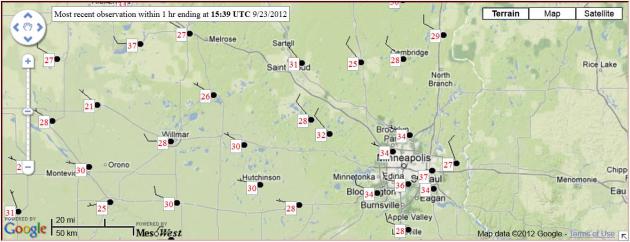



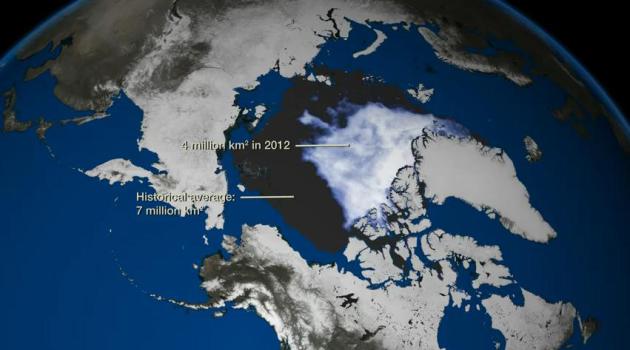




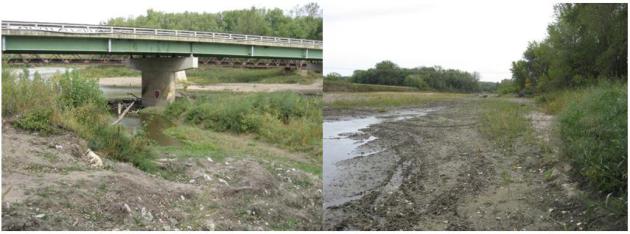



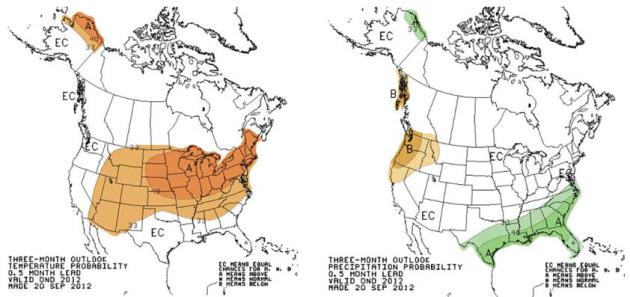
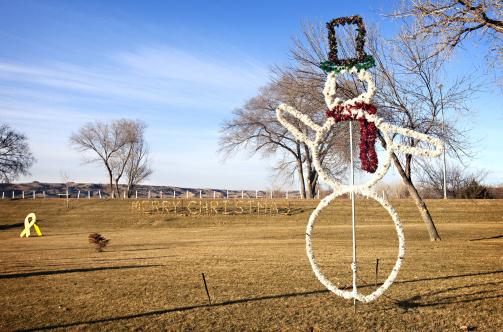



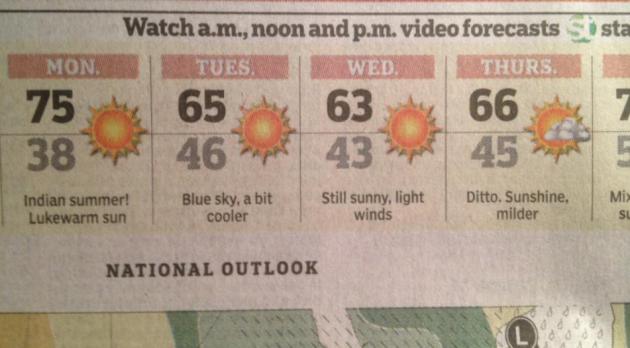







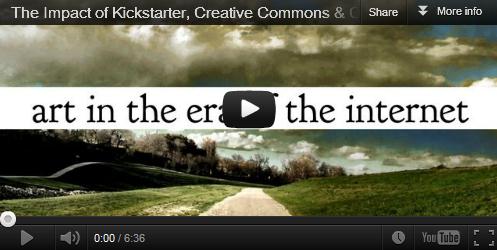

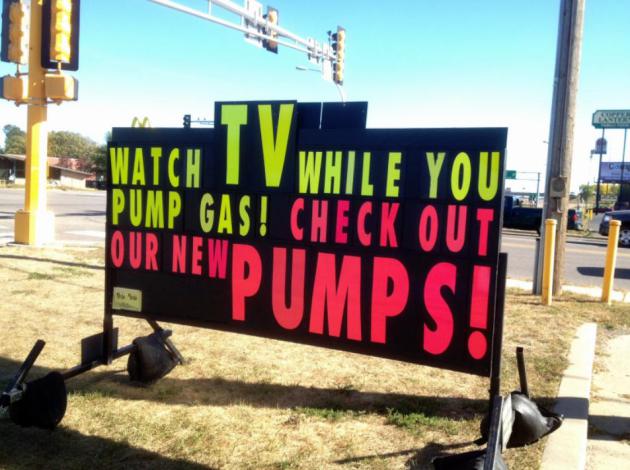
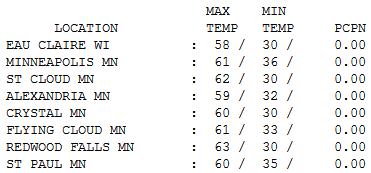


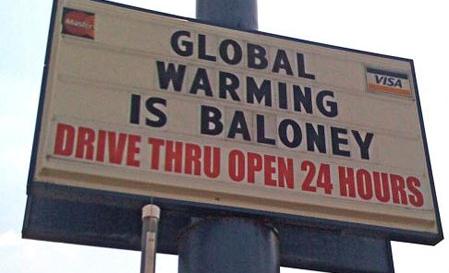

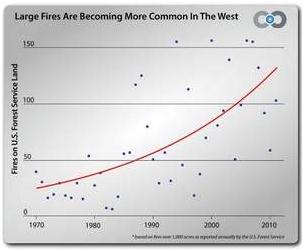



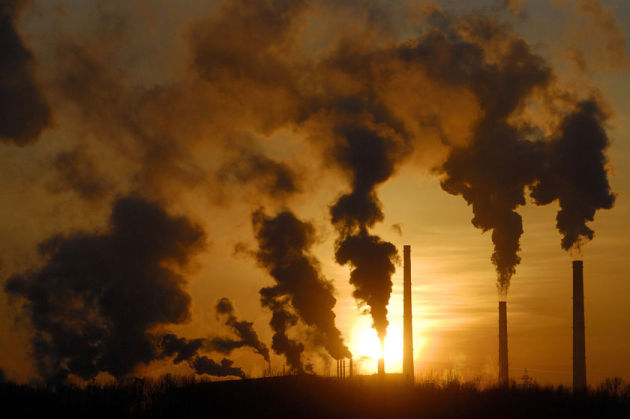
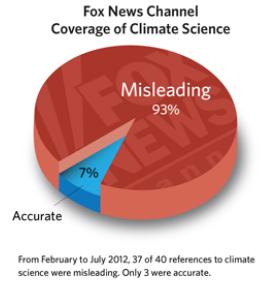
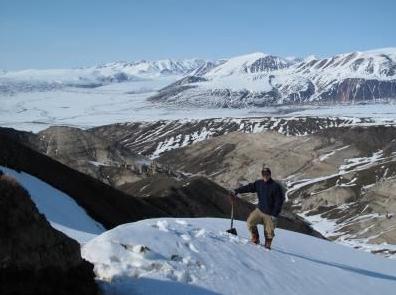
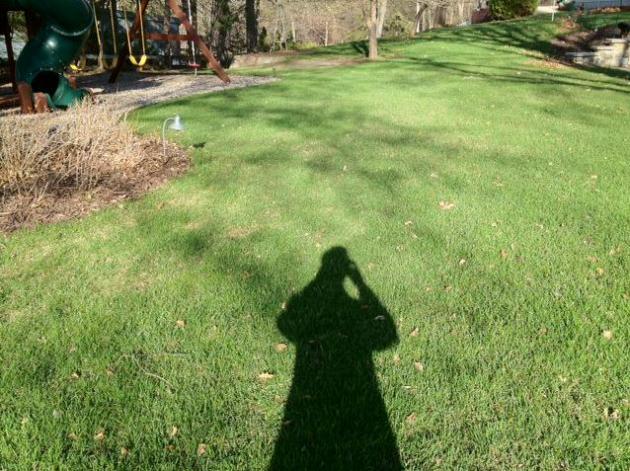
No comments:
Post a Comment